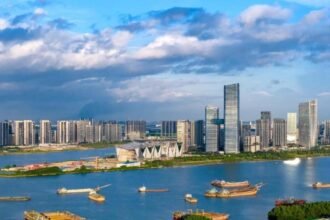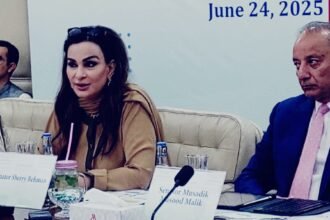DR. ALLAH BAKHSH GULSHAN
Pakistan is facing a critical challenge in managing its rapid urbanization, which is leading to the horizontal sprawl of cities and the conversion of valuable agricultural land to urban uses. The future consequences are the shrinkage of agricultural land due to spreading of rapid urbanization in Pakistan, and develop disparities in the society with the stress of new challenges like environmental, social, and economic impacts. The relentless march of urbanization has brought about a profound transformation in the landscape of modern societies, with the horizontal spreading of urban areas encroaching upon agricultural land at an alarming rate. As cities expand outward, fertile soils, productive farmlands, and vital ecosystems
are being irreparably damaged, threatening the very foundation of global food security. The consequences of this phenomenon are far-reaching, with significant environmental, social, and economic impacts on agricultural productivity, rural livelihoods, and the sustainability of urban development. The complex dynamics driving the horizontal spreading of urban areas and its devastating impact on agricultural land, highlighting the urgent need for sustainable urban planning and management strategies to balance the competing demands of urbanization and agricultural productivity.
Pakistan is experiencing rapid urbanization, with its urban population projected to increase from approximately 35% in 2010 to more than 50% by 2030. This rapid urbanization is leading to the horizontal sprawl of cities, resulting in the conversion of agricultural land to urban uses in the shape of modern societies having big horizontal plots. The costs of this spectacle are far-reaching, with highly significant impacts on agricultural productivity, food security, and the environment of the area. The stakeholders of Pakistani society, if they did not take the possible steps in serious, and not to introduce the alternative vertical transformation of urban areas, then the future generation of Pakistan will face the various, environmental and socio- economic problems. The possible environmental impacts like loss of biodiversity: the conversion of agricultural land to urban uses results in habitat destruction and fragmentation, leading to the loss of biodiversity. Secondly, the construction of buildings, roads, and other infrastructure on agricultural land leads to soil degradation, reducing its fertility and productivity. Thirdly, urban runoff and wastewater from urban areas can contaminate nearby water sources, posing a significant threat to human health and the environment. In addition to environmental loss, the socio economic Impacts developed in imbalanced state e.g. The conversion of agricultural land to urban uses can lead to the isplacement of rural communities, as farmers and rural workers are forced to adapt to new economic realities. Second social impact is the loss of agricultural land and the decline of rural industries can result in the loss of rural livelihoods, exacerbating poverty and inequality. Third one, the urban sprawl can exacerbate social inequality, as the benefits of urbanization often accrue to wealthier populations, while the costs are borne by marginalized communities. Moreover, the economic Impacts are the conversion of agricultural land to urban uses results in the loss of agricultural productivity, reducing Pakistan’s food security and increasing its reliance on imports. Furthermore, the loss of agricultural productivity and the increased demand for food in urban areas can lead to increased food prices, exacerbating poverty and inequality. Last but not least, urban sprawl can result in significant economic costs, including the costs of infrastructure development, transportation, and public services. Recommendations: Firstly, the extension of horizontal strategy will shift into vertical urban transformation. Secondly, implement sustainable urban planning strategies that prioritize compact, walkable, and mixed-use development, reducing the need for sprawl. Thirdly, implement agricultural conservation programs that protect fertile land and promote sustainable agricultural practices. Fourthly, invest in rural development programs that support rural livelihoods and promote economic development in rural areas. PAKISTAN PAINDA BAD
The Author is DEPARTMENT OF BOTANY GHAZI UNIVERSITY DERA GHAZI KHAN







